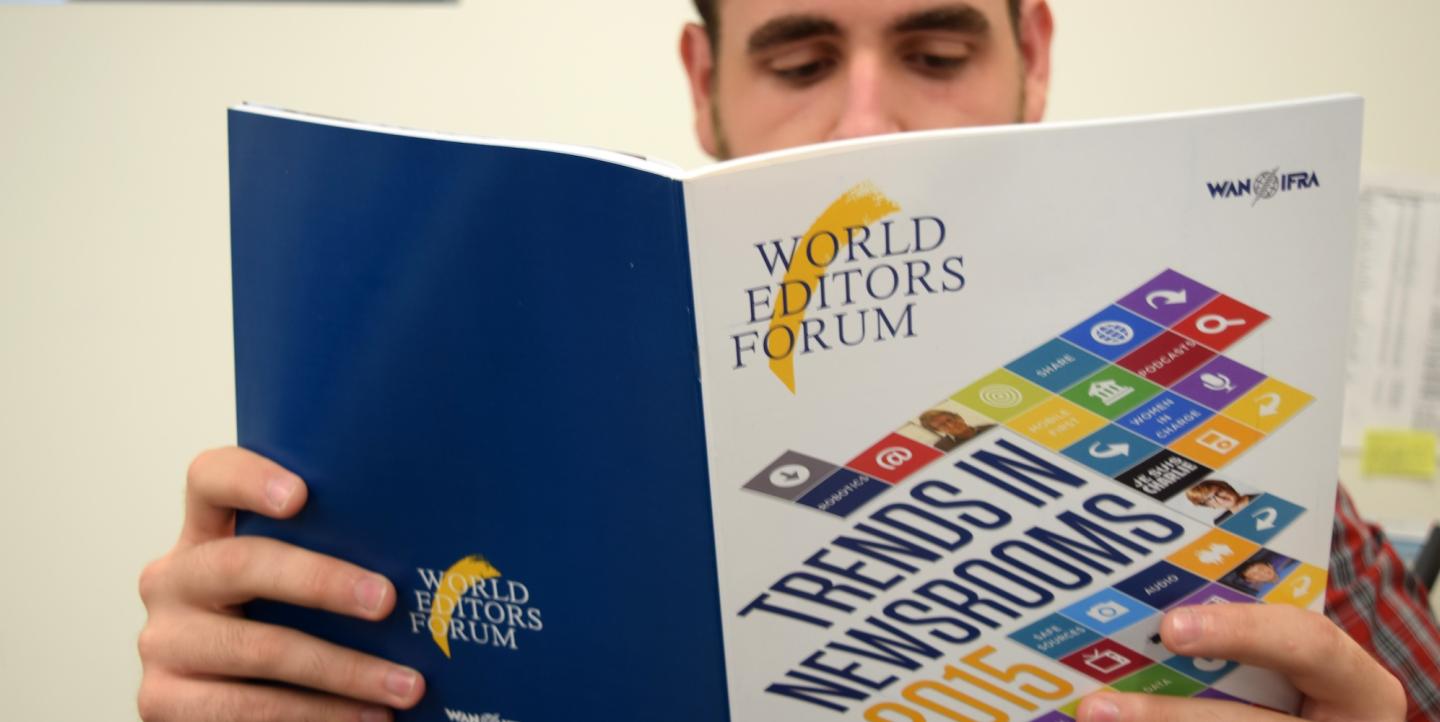This year in journalism we saw major newsrooms take big risks experimenting with the latest tech and storytelling platforms.
The AP automated their earnings reports with an algorithm, and even hired an automation editor. The Guardian built Ophan, an in-house analytics tool that lets its reporters see how their content is performing. The BBC created the interactive “Syrian Journey,” letting their readers engage with serious subject matter in a “choose-your-own-adventure” style game.
These experiments were highlighted in the World Association of Newspapers and News Publishers’ (WAN-IFRA) recently released Trends in Newsrooms report. But news outlets like the AP, BBC and The Guardian are big newsrooms with resources on their side.
There are also smaller newsrooms that are innovating in big ways with what resources they have, and they’re profiled in the last chapter of the 103-page examination of the nine top newsroom trends, alongside Q&As with seven leaders in the industry. WAN-IFRA released the report at this week’s World Editor’s Forum, held in Washington, D.C.
Chapter author Brian Veseling, WAN-IFRA’s senior editor, starts the chapter by saying: “Frequently, stories about innovation focus on developments from publishers such as The New York Times and The Guardian, and while these companies have an amazing record of achievement, there are many other news publishers around the world who are also undertaking efforts to inform and engage their audiences in new and intriguing ways.”
Here we shine the spotlight on these smaller outlets that may inspire some innovation in your own newsroom, no matter the size.
Mawbima, Sri Lanka - Using the paper to fight a health crisis
The Sri Lankan daily tackled a major health problem - with dengue fever infecting close to 46,000 people in 2014 - through articles, house advertisements and the very ink of its paper.
On World Health Day, publishers decided to blend citronella essence with the printing ink, so that every word in the campaign was laced with a natural mosquito repellant.
It may be a quirky, off-the-wall idea, but while raising awareness of a serious health issue in the country, the paper also exemplified how different departments of a newspaper can collaborate around a single cause.
VietnamPlus, Vietnam - Using rap to draw the young
In an effort to think outside the box to engage youth, news anchors at VietnamPlus rap the top news of the day in a 4-minute video segment set to hip-hop music.
Though the editor-in-chief Le Quoc Minh said it took some persuading to get newsroom management on board, the first feature received 1 million views after being online for only 48 hours.
Straits Times Communities, Singapore - Engaging user-generated content
The English-language daily Straits Times features user-generated content from their readers alongside content from their professional writers. Readers can submit photos and stories to one of three community sites focused on entertainment, education or travel.
All contributing writers submit their content through social media sign-ins, so they’re verified by either their Facebook, Twitter or Google Plus profiles.
The Des Moines Register, USA - Virtual reality
Iowa’s Des Moines Register - with a daily print circulation of under 100,000 - made the front-page of tech news sites with its virtual reality experiment, working alongside Gannett Digital.
The paper used the Oculus Rift, a virtual reality headset, and 360-degree video to create “Harvest of Change.” They intertwined longform reporting and images to create an explanatory profile on four farm families in Iowa and how issues like technology, the environment, economics and other social factors changed their lives.
De Morgen, Belgium - Innovating through design
With a daily circulation of 50,000 people, the Flemish newspaper De Morgen was named one of four newspapers in the world with the best design from the Society for News Design.
The trick to their appeal is giving pre-made design templates a wide berth, switching up the front-page designs, often without any particular formula. This effect “transmits a visual vibe that puts it in a league with much larger and better known dailies,” Veseling writes in the report.


